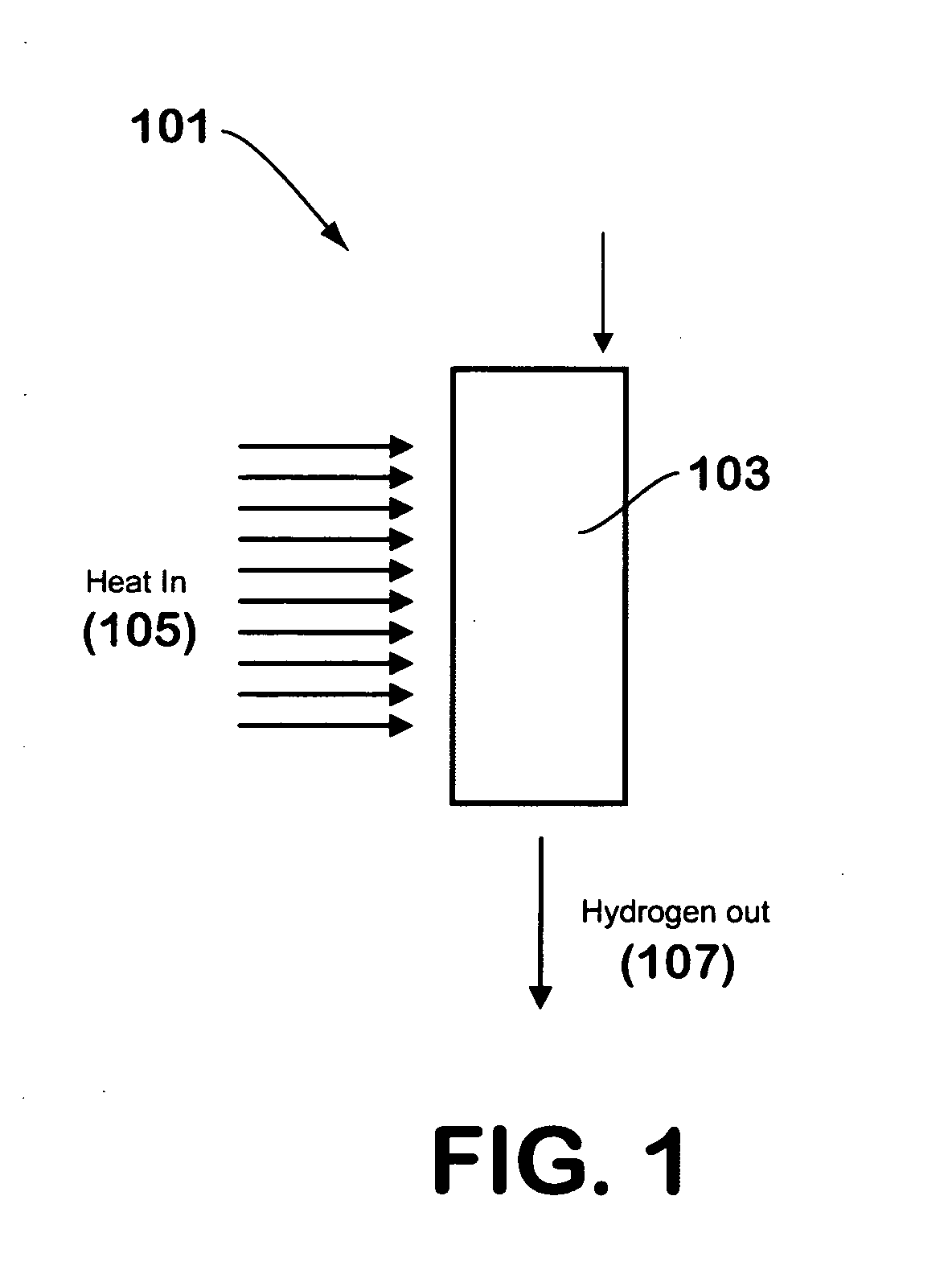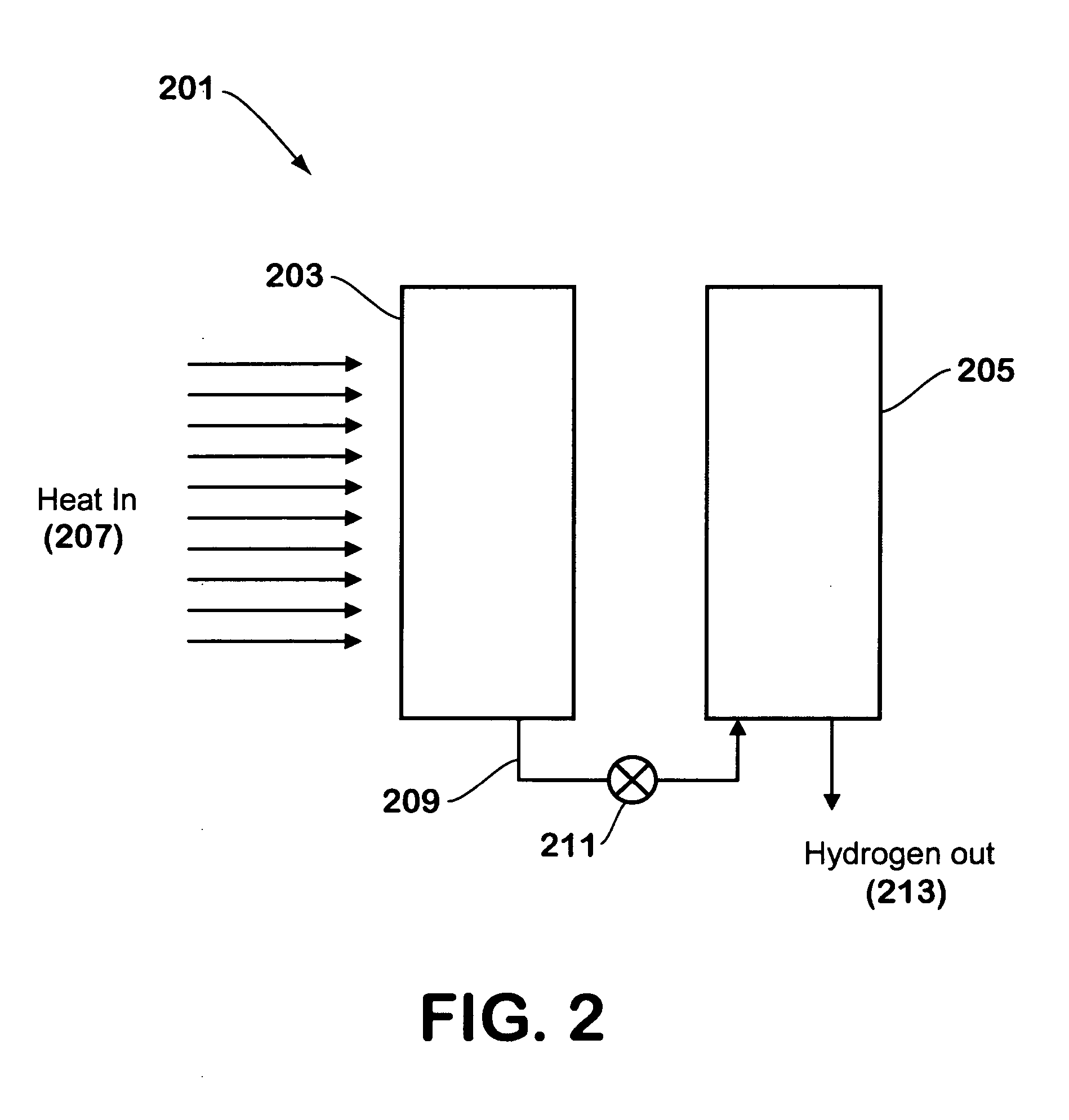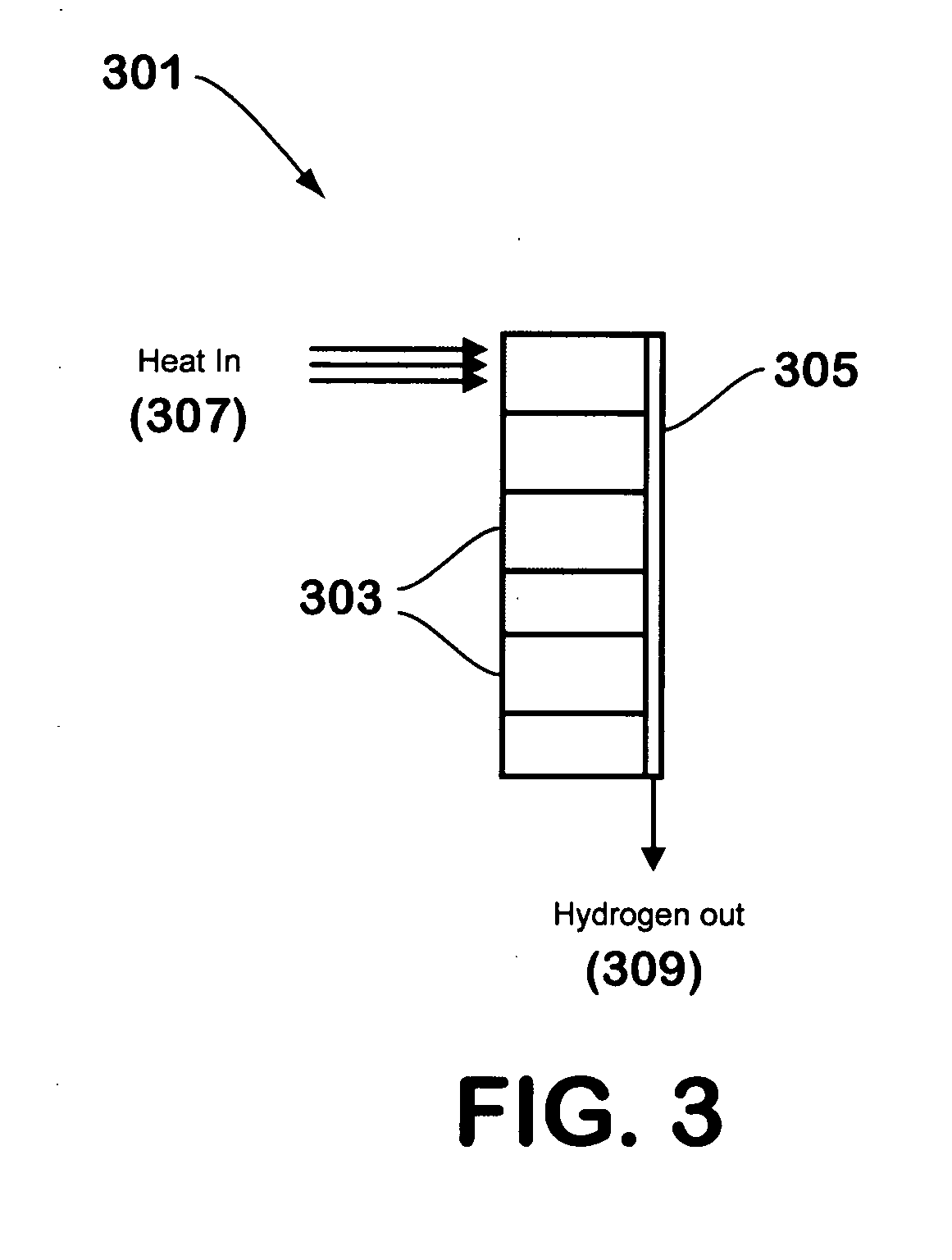Hydrolysis of chemical hydrides utilizing hydrated compounds
- Summary
- Abstract
- Description
- Claims
- Application Information
AI Technical Summary
Benefits of technology
Problems solved by technology
Method used
Image
Examples
first embodiment
[0024]FIG. 1 illustrates a hydrogen generator 101 made in accordance with the teachings herein. In this embodiment, a suitable hydrogen-generating compound 103, such as, for example, a hydride, borohydride, borane, alane, or aminoborane, is combined with a salt hydrate or other water-generating material and a catalyst (if needed). The mixture may be in a powder form, or may be in the form of granules or pellets. For example, a pneumatic press may be utilized to generate pellets of a desired size or shape from a powder mixture of the hydrogen-generating compound and the water-generating material.
[0025] To begin the reaction, thermal energy 105 is supplied to the mixture in a localized region to initiate the dehydration reaction that generates water from the water-generating material. Once generated, the water is available for the hydrolysis reaction that evolves hydrogen gas, and the hydrogen gas so evolved exits the reaction chamber through a hydrogen gas outlet 107. If the hydrolys...
second embodiment
[0027]FIG. 2 illustrates a hydrogen generator made in accordance with the teachings herein. In this embodiment, the hydrogen generator 201 comprises first 203 and second 205 distinct chambers. The first chamber 203 contains a material that is capable of undergoing a dehydration reaction to yield water, preferably with the application of heat 207. Such a material may be, for example, a hydrated salt selected from the group consisting of acetates, bromides, chlorides, formides, fluorides, iodides, phosphates, and thiosulfates, and is preferably a sulfate of aluminum, beryllium, calcium, iron, magnesium, potassium, or sodium. The hydrated compound releases water at specific temperatures, absorbing thermal energy in the process.
[0028] The hydrogen generator is further provided with a conduit 209 which conducts water released by the hydrated compound from the first chamber 203 into the second chamber 205. The conduit may be equipped with a suitable valve 211 or other control means which ...
PUM
 Login to View More
Login to View More Abstract
Description
Claims
Application Information
 Login to View More
Login to View More - R&D
- Intellectual Property
- Life Sciences
- Materials
- Tech Scout
- Unparalleled Data Quality
- Higher Quality Content
- 60% Fewer Hallucinations
Browse by: Latest US Patents, China's latest patents, Technical Efficacy Thesaurus, Application Domain, Technology Topic, Popular Technical Reports.
© 2025 PatSnap. All rights reserved.Legal|Privacy policy|Modern Slavery Act Transparency Statement|Sitemap|About US| Contact US: help@patsnap.com



